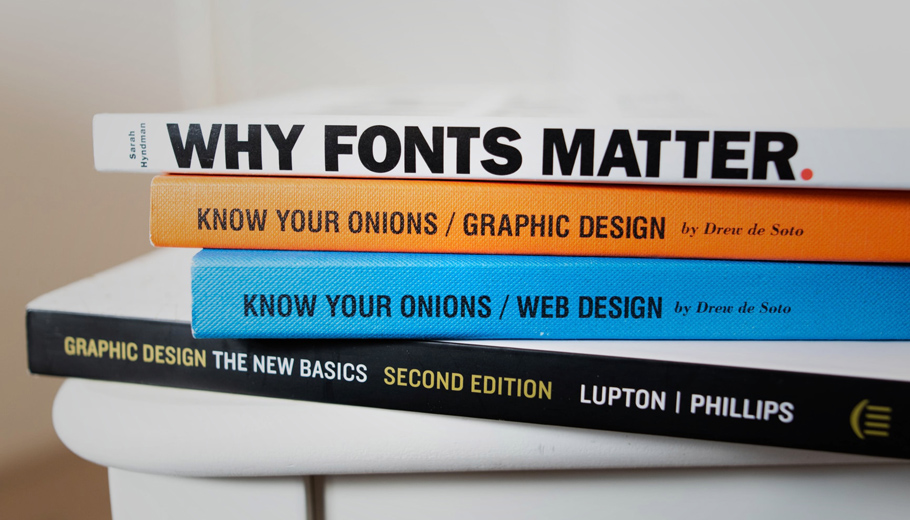How fonts influence a campaign’s persuasion power

Written by: Natalie Fearn
Fonts, typography, ligatures, however you prefer to describe them, finding the right typography style for a campaign can be the difference between making your words visible to the people you want to reach, to being ignored completely, or worse still, misinterpreted!
TMG Graphic Designer and all round font-nerd Nat Fearn, explains why the typeface you choose packs a powerful punch when it comes to making the right impact in your creative campaigns.
Why your font choice matters
Isn’t it just about making a headline bigger? Bolder? Everyone’s using Open Sans, so it’s as easy as defaulting to that, right?
As a graphic designer, I’m often faced with this sort of font-based blasphemy, since typography often takes a back seat to the more exciting elements of a page like imagery and colours.
But fonts really do deserve your attention.
We know, more than ever right now, that words matter. But the way you display those words can have just as much of an impact on your customer’s perceptions.
As famous art director David Carson once said ‘Don’t mistake legibility for communication!’
Fonts are a work of art, they make you feel something, they become part of your brand identity.
Even the same sentence can have two different meanings, depending on the font you choose.
![]()
It’s easier to see this impact in more emotive font choices like the example above, but what about your everyday, less emotive fonts like Open sans and New Times Roman? Do these have the same impact on how your customers feel about you or how your message is interpreted?
In short: yes!
It’s not one style fits all
Even popular everyday fonts can have a greater campaign persuasion power over one another.
Thanks to experiments like this one found in the New York Times, we know that people can find the same sentence more believable when it’s been presented in Baskerville, compared to other well established fonts like Georgia and Helvetica.
And when it comes to using Comic Sans, aka every school teacher’s dream and every designer’s worst nightmare, many readers not only distrust content written in it, but feel genuine annoyance as it’s mere presence.
So, should everything be in Baskerville?
Not exactly. It also depends on the message you’re trying to portray, the aim of your campaign, and the context in which it appears.
Connecting your font to your campaign
Take the Helvetica font as an example. It’s very much a marmite, love it or hate it font. Therefore, it’s likely not the font you’d want to use in say, a public health campaign, since your goal is to unite people into taking a specific action. You don’t want a portion of the population repulsed at your font (and therefore subconsciously at your campaign!). So in this context, it makes sense to go for a more neutral font like the trusty New Times Roman or even the Baskerville.
The type of business or organisation you are also matters when perusing your font options. Perception, including trustworthiness, and even the readability of a font, is impacted by the type of industry context it’s used in.
Take this experiment by IMB design for example, which found that Helvetica, when used in the banking sector, is rated 19% more readable than Baskerville (with Baskerville voted worst for readability in banking). However when it came to how trustworthy the readers deemed the fonts, Baskerville took the majority vote whilst Helvetica was deemed the least trustworthy.
And in the fitness industry? Baskerville was back at the bottom, rated least trustworthy of all.
It’s also worth considering any negative or specific connotations that go with a font. Big sans serif, slab fonts are associated with tabloids like the Sun, whereas your Georgia and New Times Roman fonts are tied to the likes of The New York Times, or Guardian – thus appealing to a completely different audience.
Finding your perfect type
When choosing the ideal font, it really comes down to understanding your audience and how you want them to feel about the message behind your campaign.
There are pros and cons to every font with how they look and portray things. Some contain and restrict, whilst others expand and inspire. Some will appeal to one audience but repulse another.
As a designer, I enjoy working with a variety of styles. I love handwritten fonts that give a bit of texture and impact to a design without the need for using tonnes of page furniture (icons, imagery etc). But I also love creating a structured and organised page layout, such as for a brochure or programme, where Open Sans or Myriad Pro would be my go-to fonts.
It’s less about preferring one font over another, and more about what makes sense in the context of the campaign and design style.
What’s clear is that, with the right design expertise, typeface is an important tool in your campaign persuasion belt. My advice would be: don’t go to default, make the most out of the entire font family and find something that really speaks to your audience
Talk fonts to us
Looking for a team who will get passionate about fonts so you don’t have to? Talk to us about how we can make your next creative campaign happen, from the finer font details to creating an impact online with changing-making creative.




